Overview
Pixel Bazaar was one of those small-but-mighty corners of the internet: a niche marketplace where people could buy and download digital icons. When I created it in 2013, my ambition was to build the marketplace for all things pixels—icons, illustrations, templates, plugins, even 3D assets. Ironically, icons alone were a large enough niche for this business to run smoothly for more than a decade.
Over the years, Pixel Bazaar became my creative refuge between client projects: a place where I could craft pictograms for fun and sell them to fellow designers, developers, and icon enthusiasts.
A bit of history
It all began at the end of 2012. I was leaving my full-time job, and I knew I needed something to kickstart my passive income until I found my next job. But as months rolled over, I was not expecting sales to increase to a steady level where I could consider this as a side business.
Apparently, this was the time where icons were becoming a thing. People would not spare a few dollars to get that perfect pictogram to include it in their app, their website, or even tattoo an icon, as one customer once did.
A few years later of dedication and love towards the icon craft, I ranked among the few weird makers on the internet that would make a business out of using the pen tool as the master tool for drawing the little pictograms.
Every year, a new Pixel Bazaar website
Each year, I needed to refresh the website with a better design and better positioning of what the brand is all about, experimenting with various payment gateways. Just for better context, I‘m talking about the time when there weren‘t Stripe or other easy-to-use payment gateways, but scrappy solutions. So, solving the financial problem of how to get the profit from my customers’ wallets to my wallet was a real undertaking.
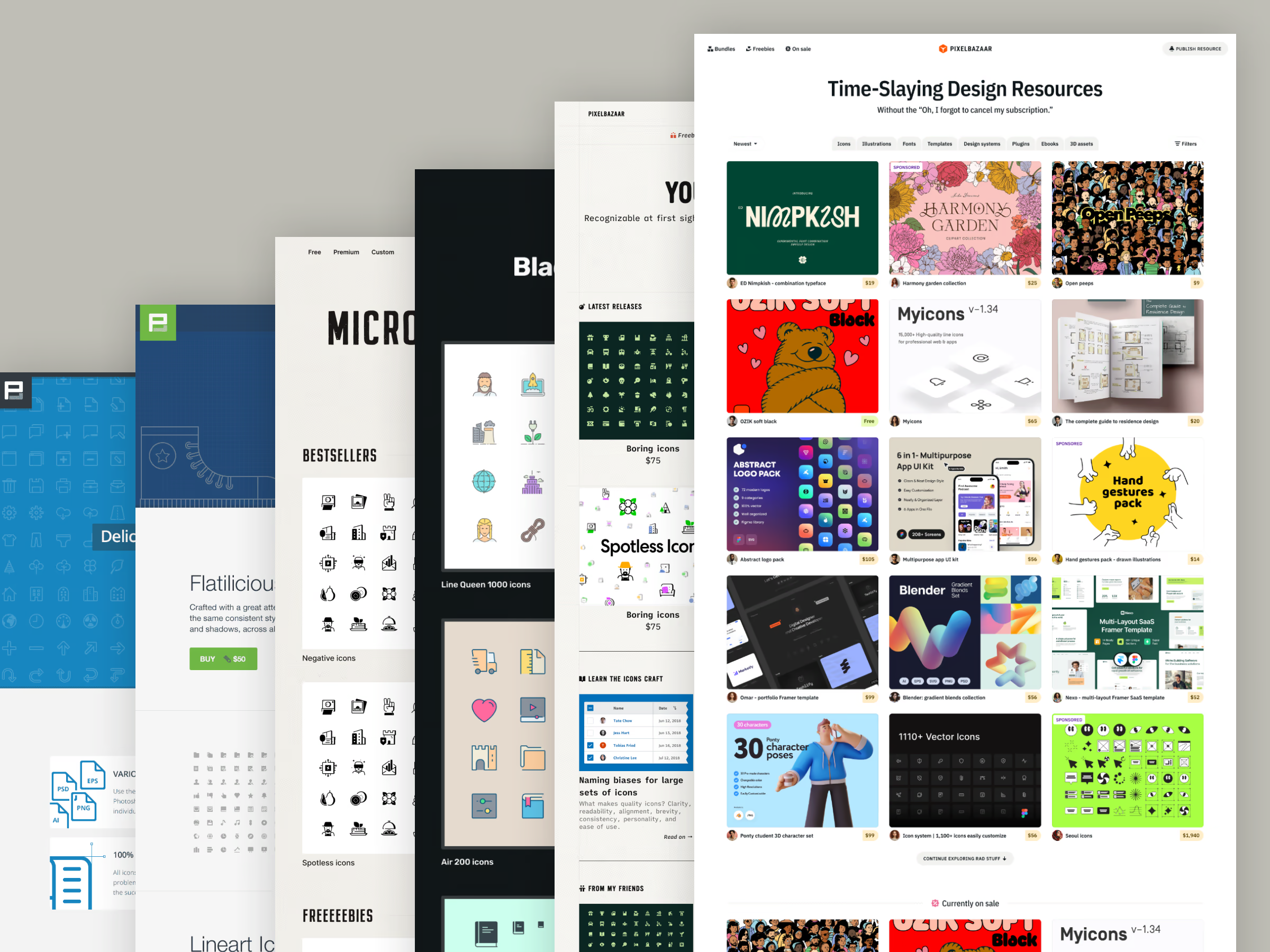
Crafting 25,000+ icons
While other icon designers chased massive numbers of icons—sometimes hundreds of thousands—my strategy was different. I preferred depth over breadth. I’d spend months crafting a single, highly polished icon pack of 1,000+ symbols and sell it at a premium because customers could rely on consistency across every tiny detail.
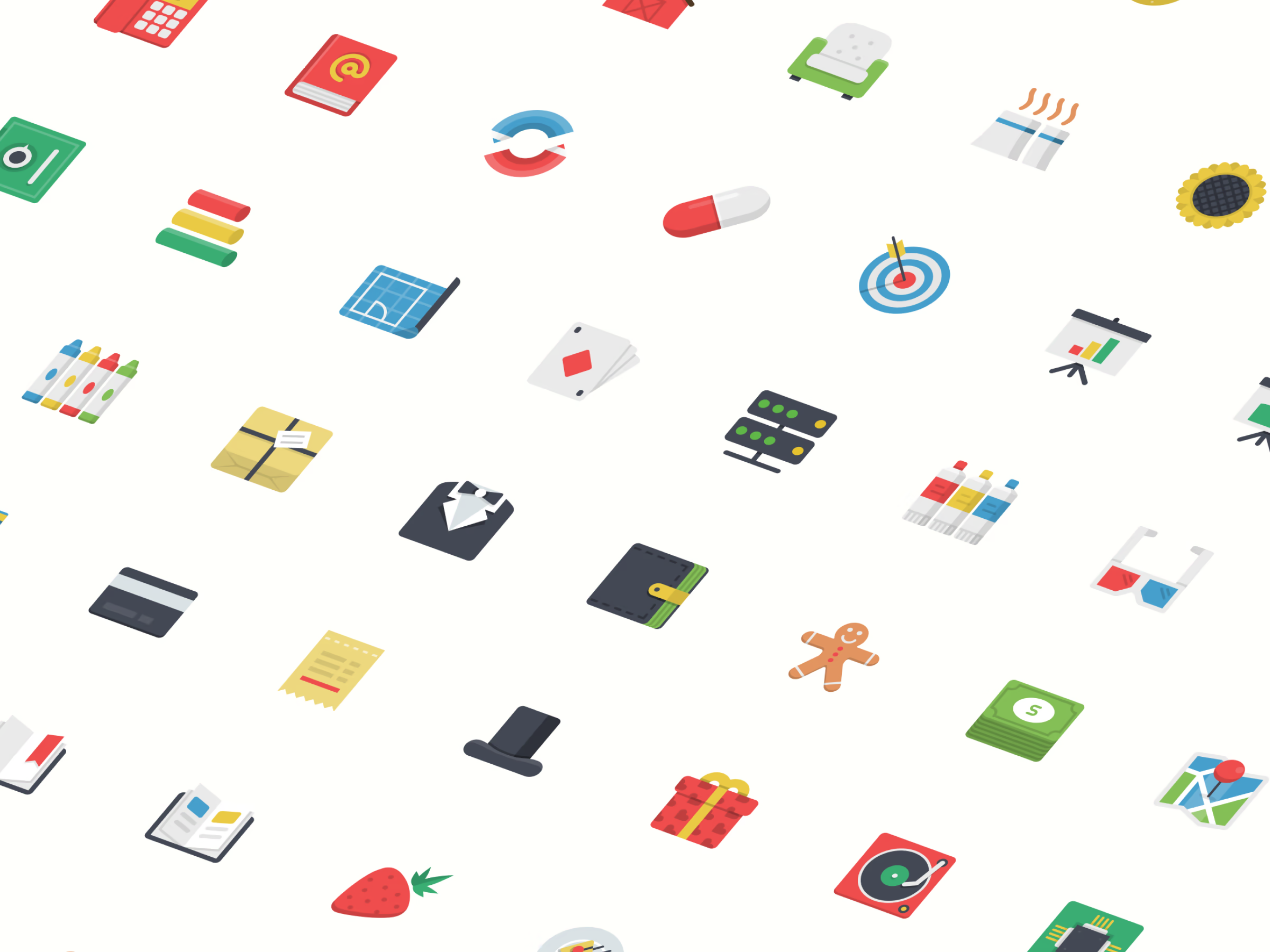
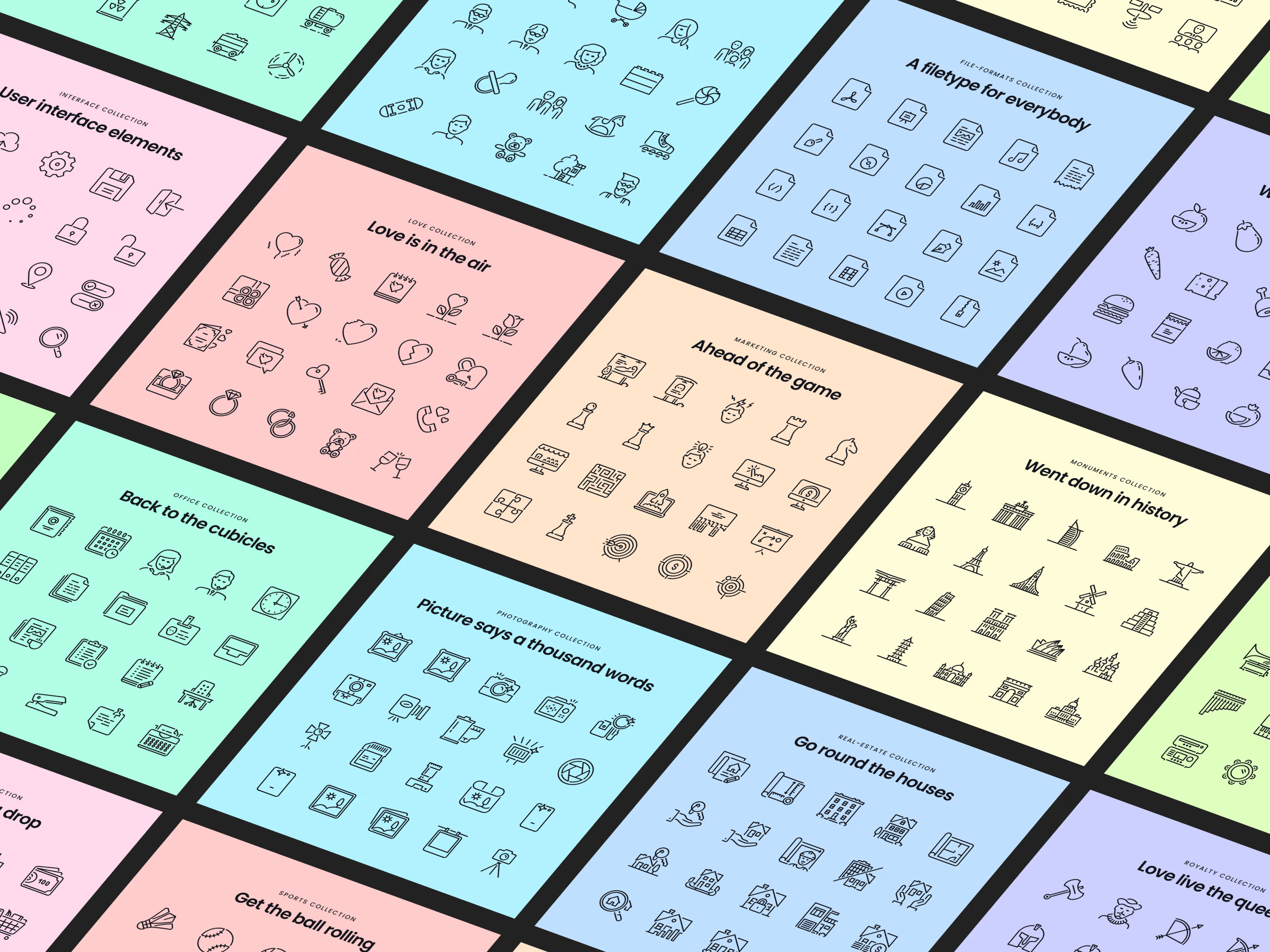


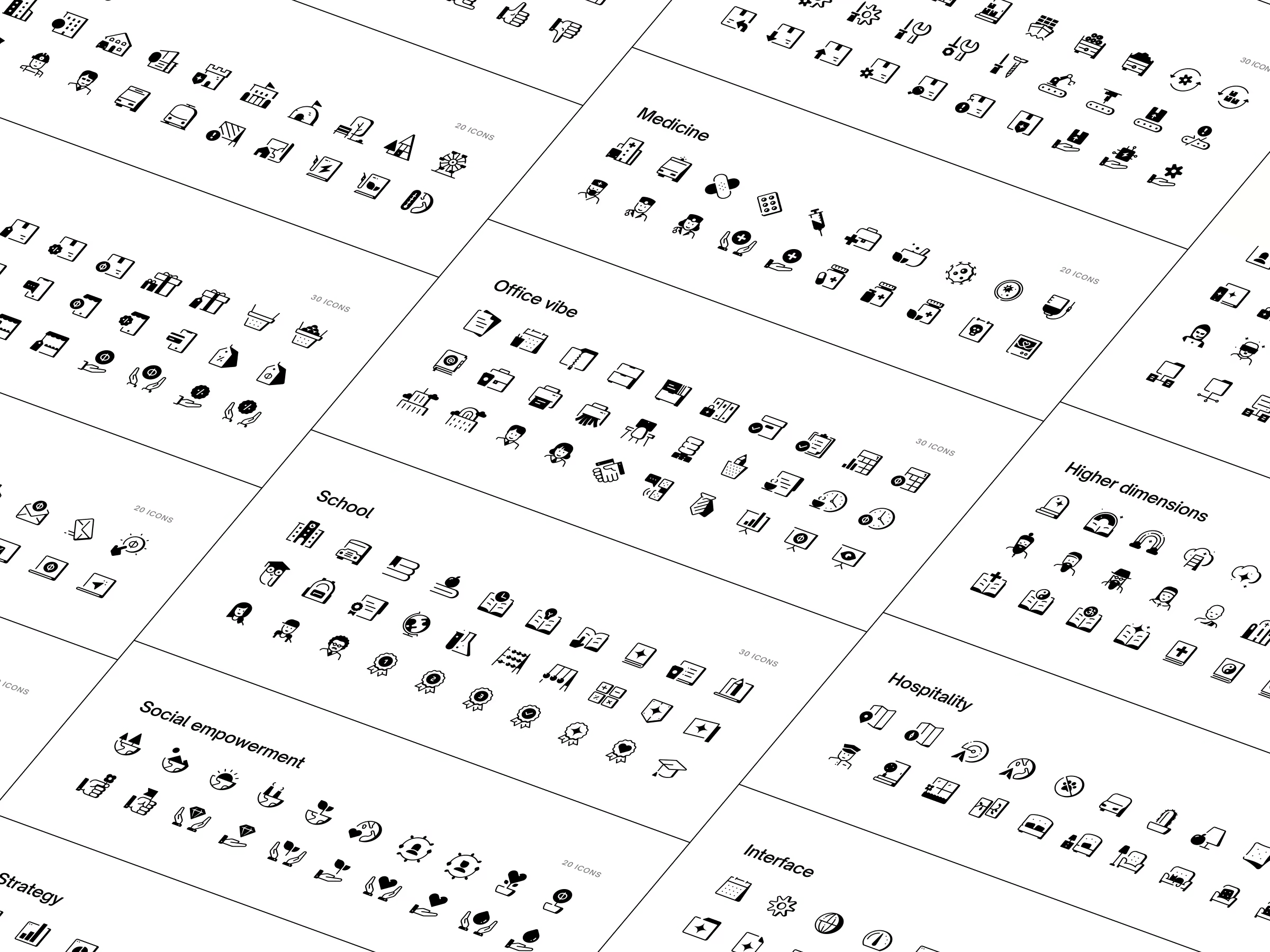
Tons of icons
By 2018, I had drawn over 25,000 icons in different styles, weights, and levels of complexity. It was impressive, but also increasingly hard to maintain. I knew it was time to slow down production and focus on marketing, optimization, and revenue sustainability.
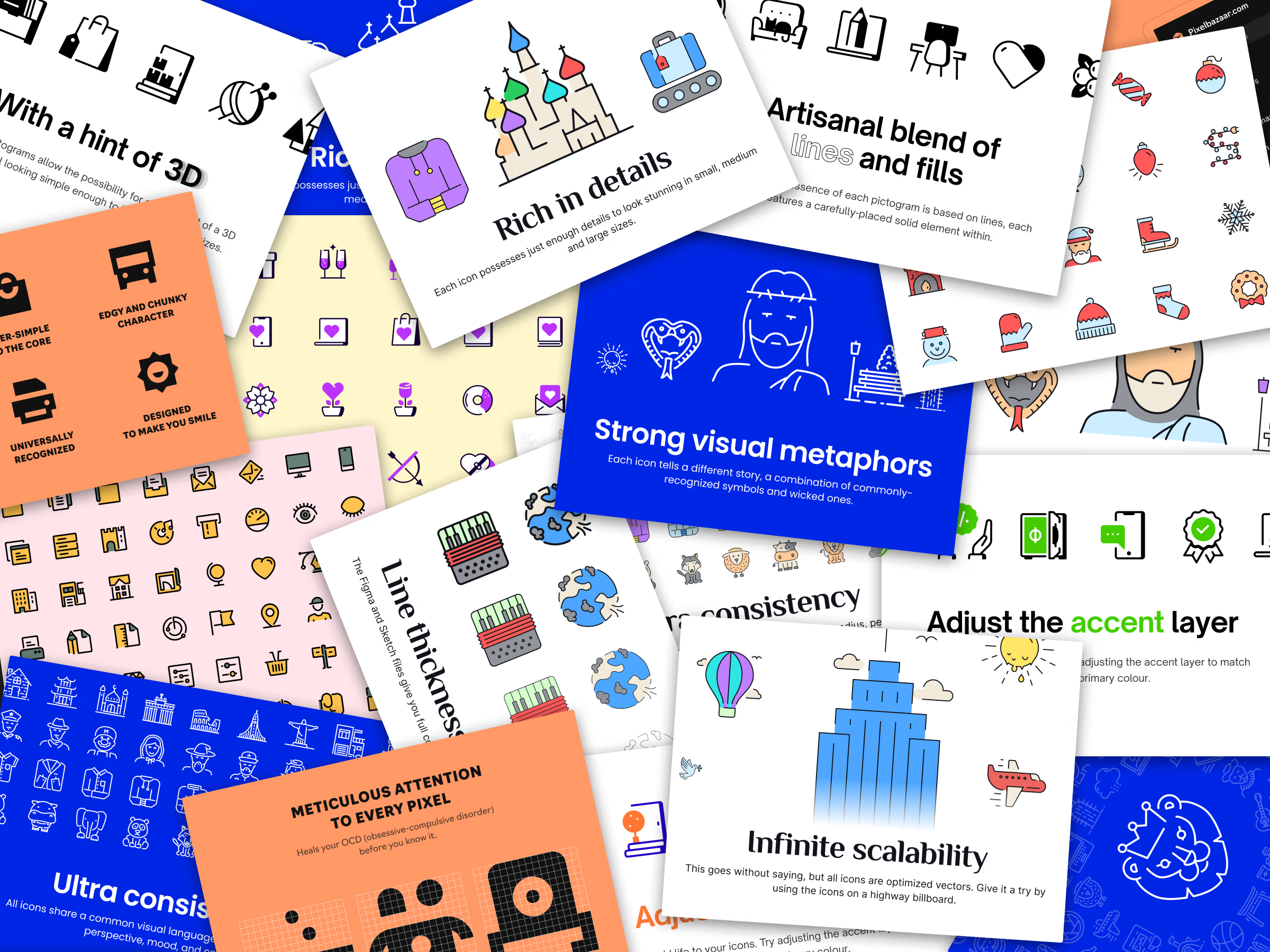
A career detour
But success had a side effect. More and more clients began contacting me for custom iconography rather than UX or product design. Slowly, my career identity blurred. I went from a product designer to “that icon guy,” and while it was flattering, it wasn’t where I wanted my long-term career to go.
So after 2019, I intentionally stepped back from active icon production and refocused on UX, product thinking, and systems design—the type of work I nowadays pursue.
The last Pixel Bazaar website
When AI-generated icons became mainstream, the market shifted. Sales dipped—but not enough to stress me. A decade of steady revenue had already allowed me to buy my flat in the neighborhood I love most. Pixel Bazaar had paid off in more ways than one.
In 2023, I created one final redesign—its most refined version—to broaden the marketplace back toward my original vision of “all things pixels.”
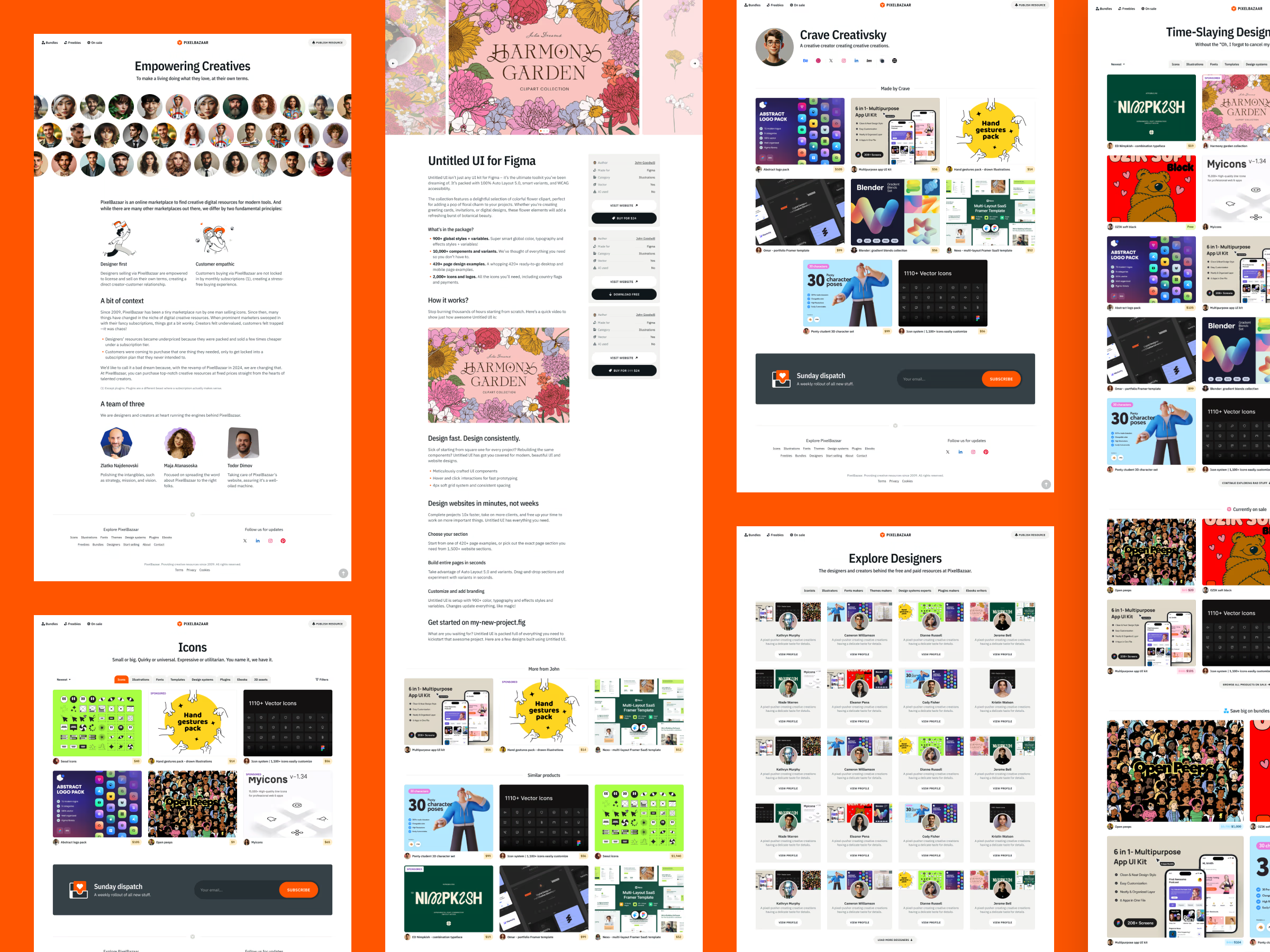
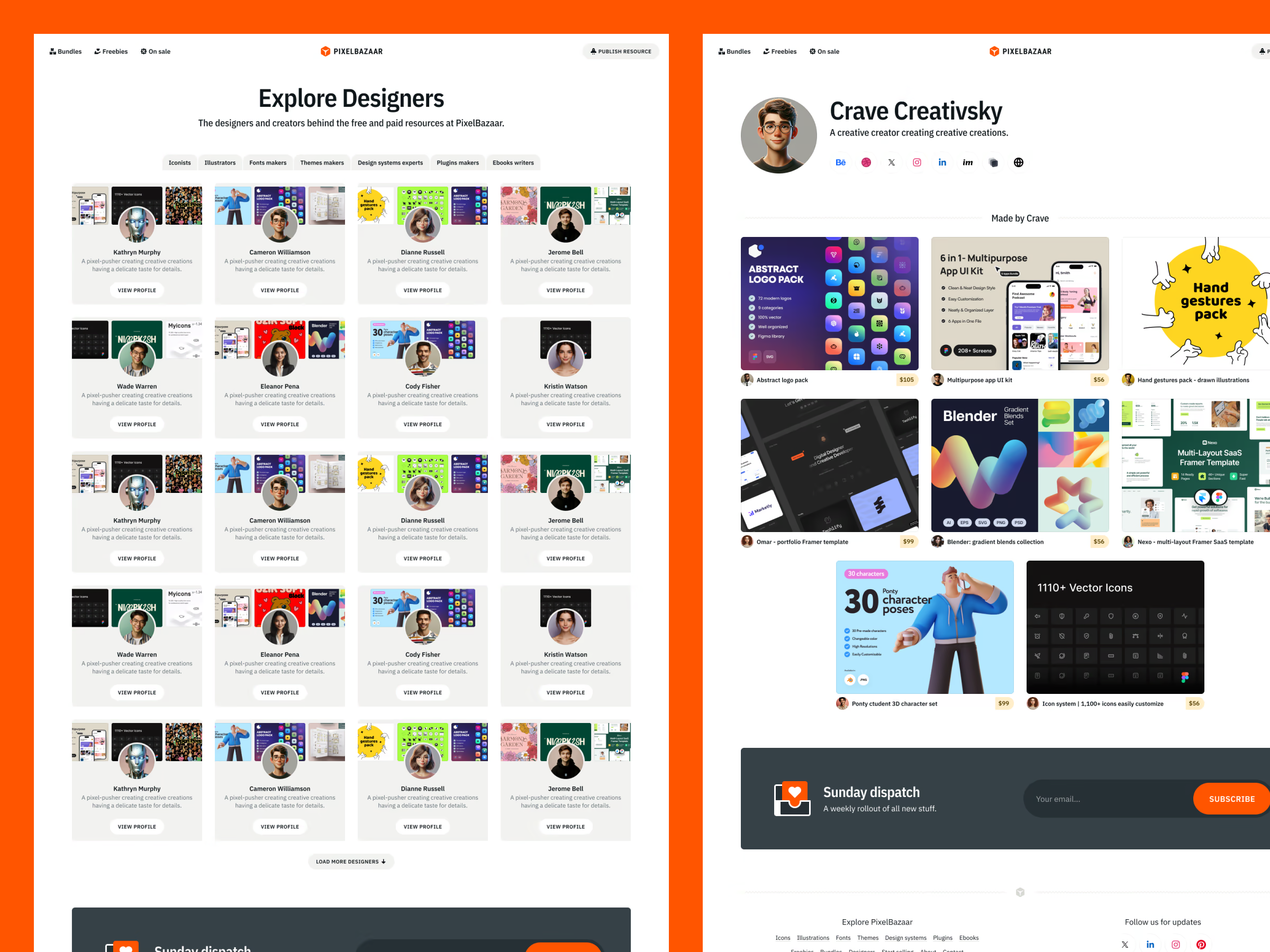
Time to sell the business
The digital-asset industry had consolidated. Big players were buying smaller ones. I knew my time would eventually come. But selling to a giant never felt right; I preferred someone who loved the craft.
In early 2024, I received an offer from exactly the kind of buyer I’d hoped for—an independent creator from a small country who was passionate about iconography. The match was perfect. I accepted without hesitation.
And so, Pixel Bazaar, my longest-running side project, found a new home. And with that, the 11-year chapter closed exactly as I wished: on a high note. And I think there might be an icon for that metaphor too.
